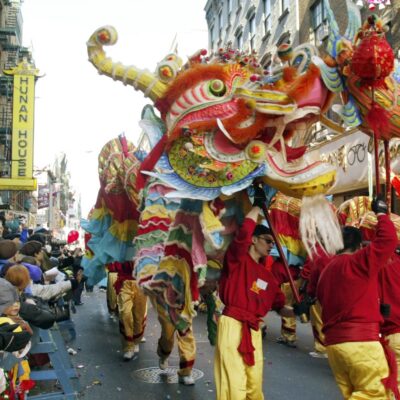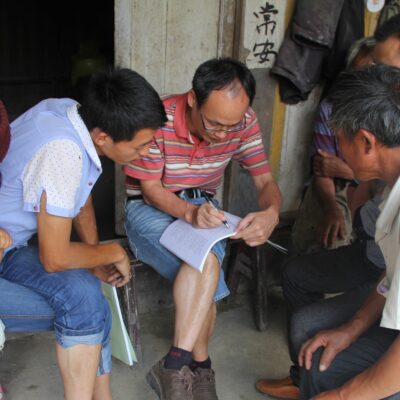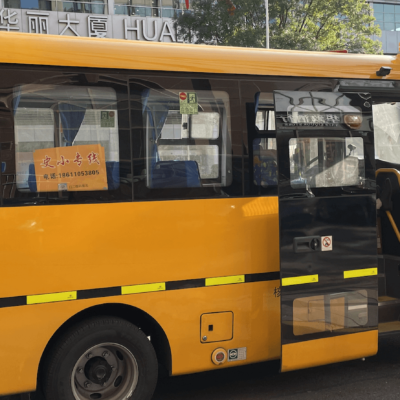China’s fight against COVID-19 has been accompanied by an unprecedented level of mass surveillance, with the extensive collection of personal and private information, involving both technological and non-technological components.
The use of digital technologies to track the movements of individuals and their health status plays an important role in tracing people at risk of infection. China’s contact-tracing app ‘Health Code” (jian kang ma), is fully embedded in popular mobile platforms WeChat (wei xin) and Alipay (zhi fu bao), and tracks the location of individuals and identifies those at risk by cross-referencing retrospective travel data.
Although the use of contact-tracing apps is far from unique to China, China has achieved an unprecedented level of tracking accuracy by automatically collecting a wide range of personal information. The Health Code app also plays a part in controlling people’s movements by assigning users a green, yellow, or red code which dictates whether a person is allowed to travel or access public spaces. A green code means that the person is deemed as healthy and can travel freely, but a yellow or red code indicates that the person has been deemed to have a medium or high risk of exposure to COVID-19. People classified as either of these two categories are not allowed to enter public venues and may be required to test or self-quarantine immediately.
In addition to digital technology, China’s health surveillance consists of a wide network of grassroots government and quasi-government institutions, such as residents’ committees (ju wei hui), villagers’ committees (cun wei hui), homeowner associations (ye wei hui), and property management companies (wu ye), which not only help to trace and report to local authorities those who test positive for COVID-19, but also help the government ensure that public health orders are obeyed. The introduction of the grid management system (wang ge hua guan li), a form of top-down neighbourhood governance and service provision using social surveillance, has been further strengthened during the pandemic.
These surveillance practices allow local authorities to detect and control an outbreak in a timely manner through intensive contact tracing, monitoring, isolation, quarantine, and lockdowns. However, the ways in which the information is collected, analysed, and used, are not transparent and do not respect standards of personal privacy and consent that are common in Western democracies. According to the state-run Xinhua News Agency, law enforcement authorities were a key partner in the system’s development. As such, it’s possible, if not likely, that the Health Code app can access GPS mobile phone location data, and that the data are regularly shared with law enforcement authorities. Incidents of privacy breaches have been reported where the identity of infected individuals and their close contacts are publicly released by the government.
China also uses other significant surveillance methods to assist state control. Extensive facial recognition technology is used most notably in the Xinjiang Uygur Autonomous Region. It is reported that more than 170 million cameras were in use in 2018, with an additional 400 million to be installed by 2020. Another is the social credit system (she hui xin yong ti xi), which is a big data system that monitors the ‘trustworthiness’ of citizens—it collects private information about citizens’ social, financial, and political activities and controls behavior by restricting access to a variety of services and benefits for those with low ‘scores’. Recently, the Chinese Communist Party launched the ‘Learning for a Strong Nation’ (xue xi qiang guo) app, which monitors the political knowledge and ‘loyalty’ of people by tracking how many news articles they read and how many correct answers they provide in quizzes. Most importantly, the app assigns personal scores to its users based on their performance and many schools and workplaces are already requesting their students and workers maintain good scores.
Several arguments can be made that the pandemic has expediated the rise of the surveillance state in China. Firstly, the success in using surveillance to control the pandemic has raised the bar in terms of the further construction of these systems: capturing human activities comprehensively is seen by the government as possible and desirable.
Secondly, and related to the first point, is that COVID-19 may have changed the public’s view of surveillance, creating a so-called surveillance culture. Several studies on the attitudes of Chinese citizens towards contact-tracing apps and surveillance show a high level of acceptance, despite problems of transparency and privacy violations. The public seems to consider violations of privacy and liberty justifiable in the context of public health.
Third, the pandemic has driven governments and companies to invest a tremendous level of resources in the development of surveillance technologies. In particular, digital technologies reduce the need for labor-intensive proximate observation, allowing efficient monitoring of huge geographical areas and events involving very large numbers of people. The development of real-time sensor technologies such as drones, remote sensing, and GPS tracking has provided unprecedented surveillance power. Machine learning and artificial intelligence technologies, particularly big data analysis and applications such as face and voice recognition, have also substantially promoted surveillance capacity by automating time-consuming analytical processes. These technological advancements not only enhance surveillance capacity but also create a situation in government where alternative ways of controlling a pandemic are dismissed. Companies and individuals who are invested in surveillance technologies are likely to be advocates of surveillance and call for the expansion of their technologies for other uses. Likewise, the creation of new institutions in charge of COVID-19 surveillance may undergo ‘mission creep,’ expanding their power beyond their original organisational purpose.
Fourth, and perhaps most fundamentally, surveillance is central to the authoritarian politics of China. Although liberal democracies also use surveillance to achieve state objectives, the pandemic shows that democratic and authoritarian countries exhibit significant differences when it comes to surveillance. For democracies, there is usually a strong awareness of the risks of surveillance to privacy and liberty. Hence, publicly elected policymakers tend to use surveillance tools with caution and adhere to key principles, such as restricting surveillance to a predefined period of time, transparency in data collection and use, limiting access to data as much as possible, and establishing high-level oversight. In many democratic countries, the government has chosen to introduce voluntary contact-tracing systems and do not have access to all the personal data collected by the systems. In authoritarian regimes, the lack of accountability and suppression of public opposition allows states to impose mass surveillance relatively easily and less cautiously, which means that surveillance is likely to be the first choice rather than a last resort for policymakers. Furthermore, authoritarian governments possibly have a stronger need for surveillance because of the lack of alternative mechanisms for the government to gather reliable information, such as a free media and an independent judiciary.
Surveillance in authoritarian states is not simply a means to achieve a particular policy objective but an enabling mechanism that reinforces the political dominance of the state. According to French philosopher Foucault, surveillance is a form of disciplinary power, involving the subjectification of the public, who are more likely to obey imposed rules in a non-deliberative manner through self-discipline if they are under constant surveillance. Surveillance and authoritarianism therefore have a synergistic relationship. Authoritarianism provides the authority to introduce a surveillance state, and in turn, surveillance strengthens the authoritarian state’s control over the population. For these reasons, authoritarian regimes are more likely to deploy invasive surveillance as a policy tool, and few countries have the ability to introduce surveillance systems as extensively as China.
In summary, the COVID-19 pandemic has accelerated the use of mass surveillance in China, which may provide the state with a measure of confidence in the use of similar strategies in areas other than COVID-19. For instance, the Hangzhou city government has proposed expanding the health code system to include public health issues such as smoking and alcohol consumption. Others believe that China’s model of illiberal pandemic response could spread to other nations, especially developing countries, given China’s influence in many.
The increased use of surveillance will have far-reaching implications in China. On the one hand, the fact that surveillance can massively increase governing capacity means that the government may have new tools to address intractable policy problems. For example, in the domain of climate change, a controversial mitigation policy known as ‘personal carbon allowance’ can only be effectively implemented through mass surveillance. The idea is to assign a ‘carbon allowance’ to citizens, who must try to keep their emissions within the budget. This idea was originally proposed in the 1990s, but it hasn’t yet been implemented because of technological limitations. Now, digital surveillance can be used to achieve the objective.
On the other hand, significant concerns remain in relation to the unconstrained use of surveillance by the government, resulting in excessive and oppressive violations of privacy and individual liberty. Surveillance can and must be done in a just and socially acceptable manner, by protecting privacy and liberty as much as possible and ensuring public participation in decision-making processes. Furthermore, the abuse of surveillance power, as illustrated recently when the Health Code was used by a local government to prohibit citizens from protesting, must be avoided. Addressing these potentially dangerous issues could be a challenging task for the Chinese leadership now and into the future.
Image: People wearing masks in Shanghai. Credit: guineapig33/Flickr.




